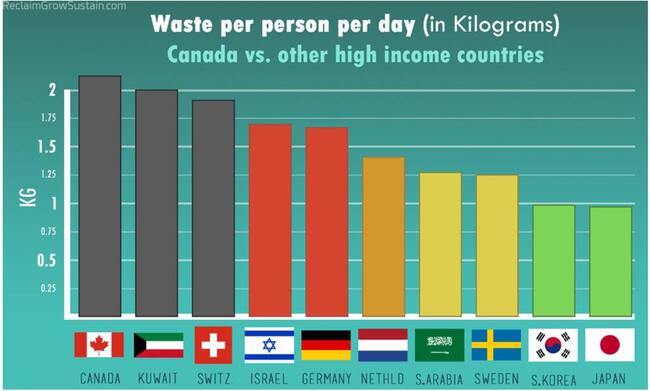- Log in to post comments

The US Environmental Protection Agency (EPA) publishes an update each year on recycling rates in the United State. The EPA’s report usually lags by two years; however, the report nevertheless is an interesting review about how recycling diversion rates are progressing in the US. 2015 recycling rate in the US were 34.7% versus 36.5% in 2014.
The 2015 EPA report can be found at: https://www.epa.gov/sites/production/files/2018-07/documents/2015_smm_msw_factsheet_07242018_fnl_508_002.pdf
At the time of this blog post, I am not aware of any similar reports offering a year over year review of Canadian recycling rates. Canadian diversion results are generally posted annually at a municipal or regional level. There is recycling rates information available on the Stats Canada website found at: https://www.canada.ca/en/environment-climate-change/services/managing-reducing-waste/municipal-solid/statistics-trends.html
Reviewing the EPA report and reflecting on Urban Impact’s current diversion reporting recommendations to our customers, I continue to believe that Diversion Rate % is an imperfect metric. The EPA report shows two Key Performance Metrics (KPI) when graphing the US results.
- The Diversion Rate % is the most common measurement of a recycling programs success. Recycling diversion is shown as a percentage and is calculated as follows:
(Weight of Recycling / (Weight of Recycling + Weight of Garbage)) X 100 = % Diverted
The Diversion Rate metric is frequently used in both municipal and commercial applications. I feel that this rate does not truly reflect the comprehensive diversion efforts being made in any municipal or commercial jurisdiction. Recycling rates shown as a diversion percentage do not capture many important Reduce and Reuse initiatives that exist in our communities across North America including: Thrift Stores, Second Hand stores, Antique trading, Reuse centers, home or backyard composting efforts and many other important initiatives that live under the broad category of Recycling.
- Urban Impact has been coaching our customers to consider including Waste Generated per Capita as a second metric that is measured in conjunction with a Diversion %. Waste Generated per Capita is usually a weight measure, for example 100 kilograms of Waste Generated per Capita during a certain time period. Instead of per Capita, you can of course use Residents or Tenants. We believe that overall waste reduction efforts would be balanced and more accurately measured by using these KPI. It is our recommendation that the Per Capita count is a reasonable attempt at Full Time Employees or Full Time Residents for any given building. This of course is a bit of an imperfect science however if Waste Generated per Capita is considered consistently quarter over quarter it can provide very good data from which future dated waste reduction or diversion decision can be made.
Are there other metric’s that should be used to measure our recycling or waste diversion results? There are of course others that could be used, but often they take a lot of time and effort to measure and record and report on.
It is possible that an organization utilizing these two KPI may show a steady Diversion Rate (lets say 50%) and a declining Waste Per Capita measure. In our opinion this would be a great outcome, because, less garbage being created!
In addition, please also consider that current Recycling Rates in North America are likely not benefiting from the changing composition of packaging. Packaging is becoming more complex, lighter and with an ever-increasing number of multi laminate packages found in our supply chain. Even if people are diligently recycling the lighter packaging items, they are not contributing to the diverted weights as significantly as previously. Arguably the waste stream is also getting lighter with most paper, plastic and metal packaging removed and organics diversion implemented in most residential and commercial applications across Canada.
We would love to hear your thoughts about which metrics should be uses to measure recycling results.
